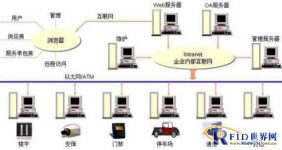
Design Scheme of Access Control System for Large Stadium Project
[ad_1]
Large-scale stadiums are mainly some venue projects, including access control, electronic ticket checking and so on. Stadium engineering is very different from ordinary buildings. It covers a large area, has a large space span, and has scattered building floors, equipment and computer rooms. At the same time, the application situation may be idle at ordinary times, but once it is used, it will be a peak application. The load requirements are very high. The spacious entrance is equipped with an access control system, and electronic ticket checking is implemented to standardize the order of entry. At the same time, it is guaranteed that in an emergency, the audience can be evacuated in a short time.
? The overall requirements of the access control system
The access control controller should have an independent controller and memory. The access control system can run offline and independently, and the system can automatically upload information when the communication with the server is restored. The system adopts TCP/IP networking mode, or RS485 mode according to the situation.
Access control system access control cards generally use 13.56MHZ radio frequency identification cards, which are dynamically encrypted between the card and the card reader to prevent information from being stolen. The access control data is stored in a separate sector of the card, and other sectors can be used for all-in-one card applications as needed.
Electric locks are selected and used according to the on-site situation. In large-scale stadiums and venues, single-door, double-door electromagnetic locks, electric bolt locks and emergency escape locks are more commonly used. Use the door sensor to monitor the opening and closing of the door, opening the door too long, and forcibly opening the door.
Set up access control workstations in the main control room and sub-control rooms to monitor the front-end field equipment in real time. Once the door is opened forcibly or the door is opened for too long, it can automatically alert on the access control workstation, and it can pop up an electronic map to display the alarm location. It can be linked to the TV monitoring system to facilitate managers to understand the situation on the spot.
? Access control point distribution design
The main function of the access control system of large stadiums is to prevent illegal personnel from trailing into the controlled area and to ensure the normal development of events. Access control points for large stadiums are mainly distributed in important computer rooms, communication rooms, IP rooms, media offices, Olympic organizing committee offices, doping control centers, competition offices, athletes rooms, locker rooms, etc.
? The integration requirements of the access control system
There may be two situations for the integration requirements of access control systems in large stadiums. One is the traditional IBMS integration, and the integration of access control with fire protection, building control, and monitoring systems to achieve system information sharing and cross-system linkage. The integration method requires real-time, reliability, and interactivity.
Another requirement is the integration of large-scale stadium command platforms. The purpose of this integration is to monitor the status of the access control system on the large-scale stadium command platforms. Access control system Large stadium command platform generally integrates multiple venues and multiple systems. Its purpose is to integrate information resources related to large stadiums on a large platform. Its main function is information collection. In actual use, it is generally “monitoring”. Without control”.
? IBMS integration of large stadiums
IBMS integration mainly includes weak electronic systems such as access control, monitoring, anti-theft, and fire protection.

? Integration of access control system and DVR system:
The access control system and the DVR system are generally integrated using API. Through API, the access control system can send alarm information to the DVR system, and can call DVR video images through the network and control PTZ; the DVR system can receive the alarm information of the access control system. Perform linkage operations.
? Integration of access control system and TV monitoring system:
The access control system and the matrix system are generally integrated using the serial protocol. The access control system server and the matrix are connected through the serial port. When an access alarm event occurs, such as invalid card swiping, too long door opening time, forced door break, etc., the access control system server sends it through the serial port The ASII protocol commands are given to the matrix host, and the matrix host implements PTZ, preset call, image switching and other operations in accordance with the protocol commands.
? Integration of access control system and fire protection system:
The linkage between the access control system and the fire protection system generally adopts dry joint hard linkage to ensure safety and reliability. The fire alarm signal is output to the access control system to receive. Once the fire alarm is triggered, the access control system can automatically open the access control of the corresponding area, which is convenient for people to escape urgently; at the same time, the access control The passage is conducive to the disposition of glass breaking buttons on the escape side, so people can escape urgently.
? Integration of access control system and building automatic control system:
Unlike building control systems, access control systems generally use OPC or ODBC. Through the OPC interface, the numbers of related parameters in the related database can be read or written to change other systems or the state of a certain device by other systems; through the ODBC method, the database form can be imported or exported, and the underlying protocol Edit to make your own hardware devices communicate with other software.

[ad_2]


